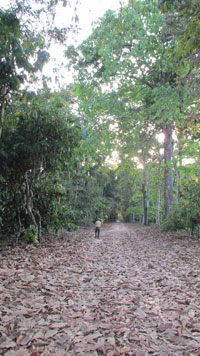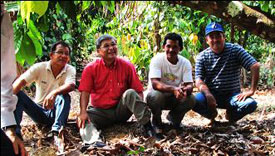活動報告
Biological interaction of plants in Agroforestry system in Tomé-Acu
 |
|
Katsura Tsukano
1st year graduate student, Department of International Environmental and Agricultural Science,
Graduate School of Agriculture
Destination and period: Tomé-Açu, Brazil. 9, Sep., 2012 - 9, Oct., 2012
Abstract:
Tomé-Açu is the oldest the Japanese settlement in Brazilian Amazon. In 1950s, the black pepper grew well with application of chemical fertilizers. However, the international market price declines, the Fusarium disease spread, and the flood damaged the black pepper plants. So they had converted into Agroforestry system from monoculture. Japanese Brazilian (Nikkei) has developed unique agroforestry system (SAFTA). The purpose of my activity is learning “Field oriented leader skill” in local area, learning practical attempts by farmer, and finding the potentials of agroforestry systems. For finding the potentials, plants were collected from the agroforestry system and screening their allelopathic potential were conducted by using “Sand witch method”. In this experiment, some plants showed allelopathic activity and this implied these plants have potential to utilize various way. And through this field work in Tomé-Açu, I learnt the importance of going to field and learning from local people. Returning our research result to local people is also very important. We cannot stand in the same view point with local people in only lab. And for understanding local situation, we need communication skill. When we consider for local people in real earnest, it is easy to open up to local people. In the future, I would like to think what I can do for local people and return my experience in Tomé-Açu.
Key words: Successional agroforestry system, allelopathy, traditional agriculture, useful plants,
